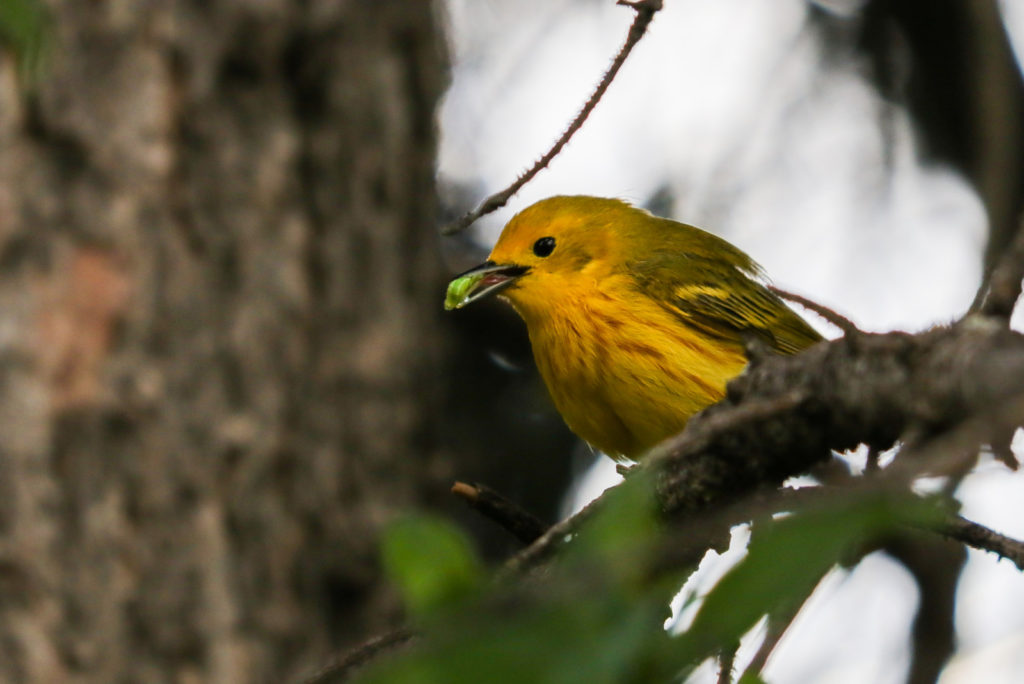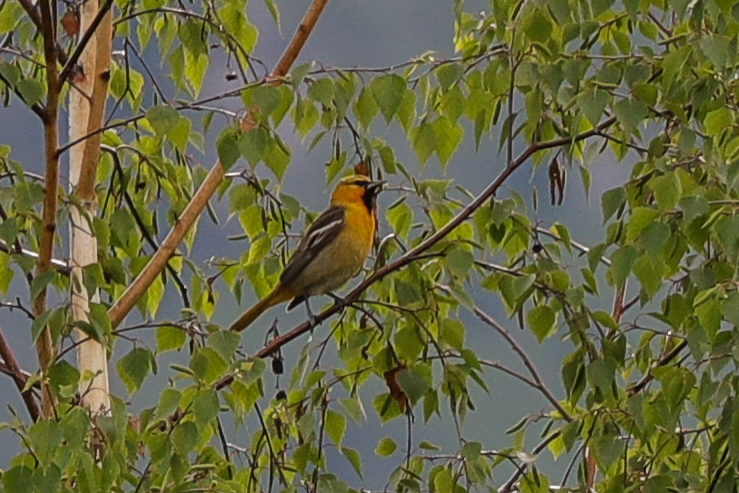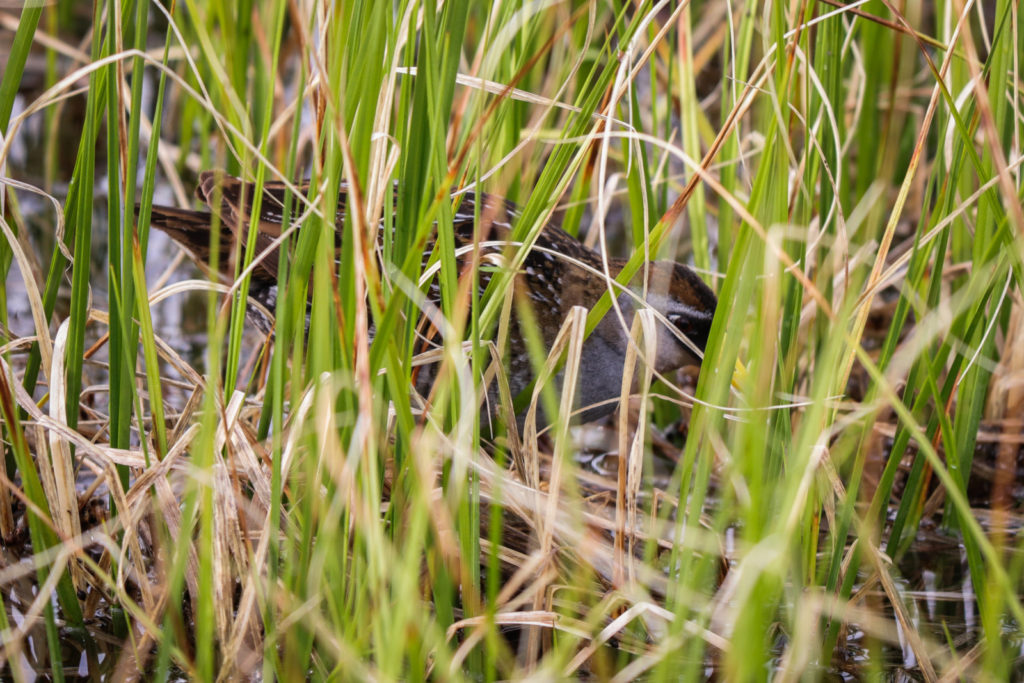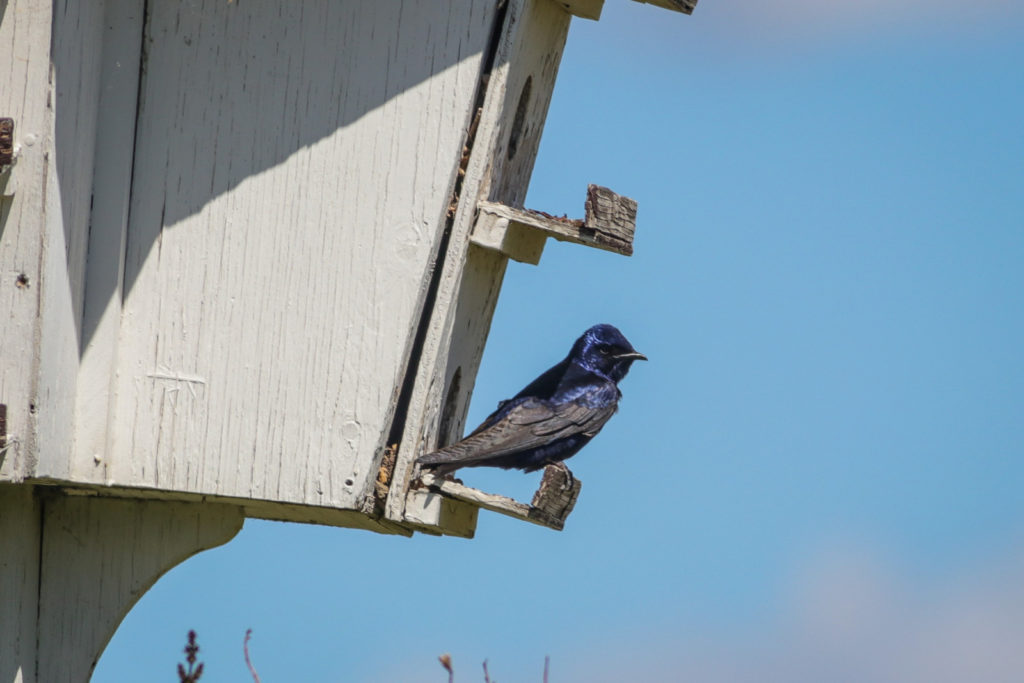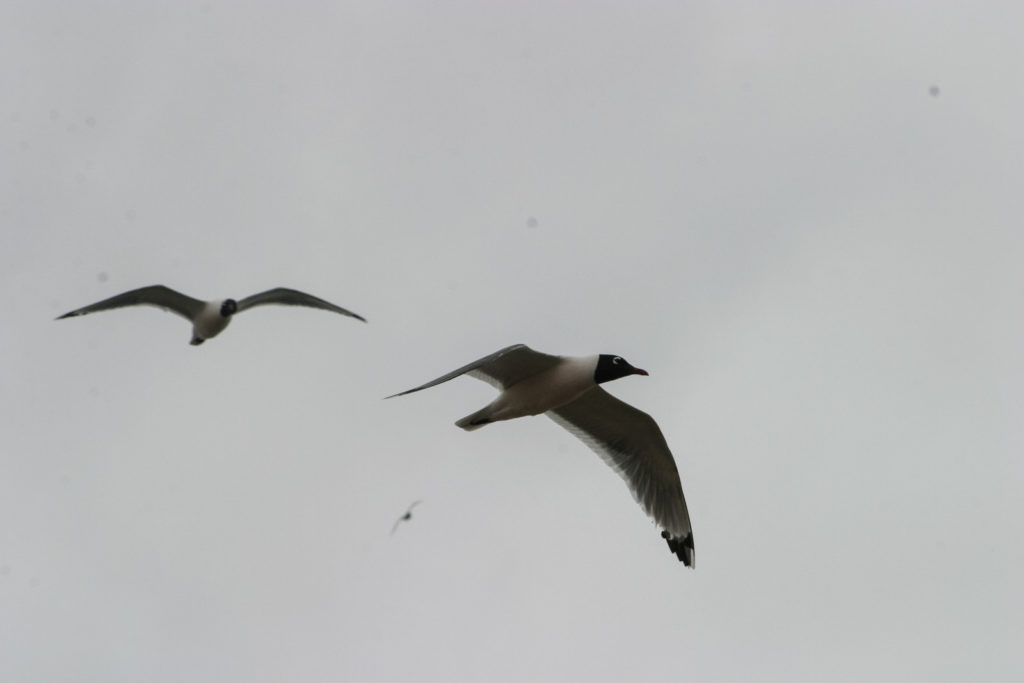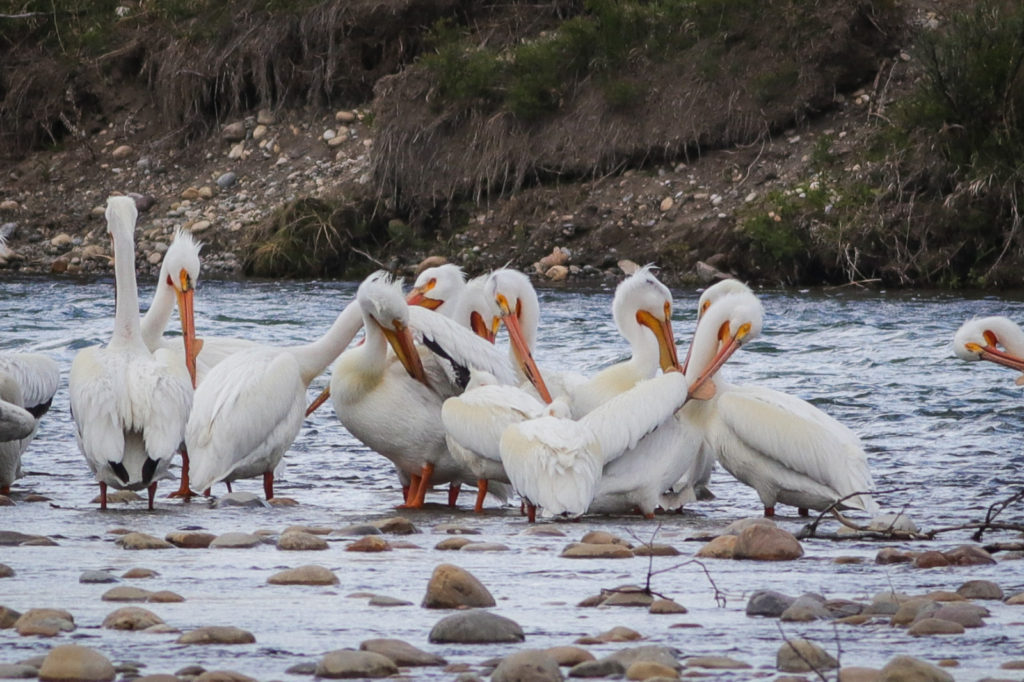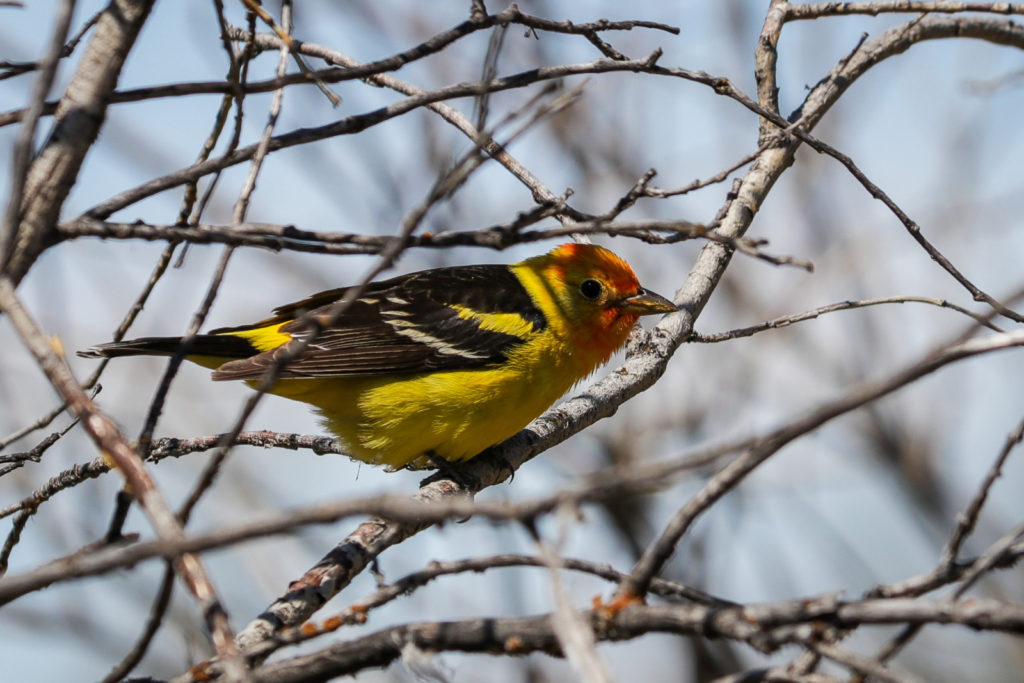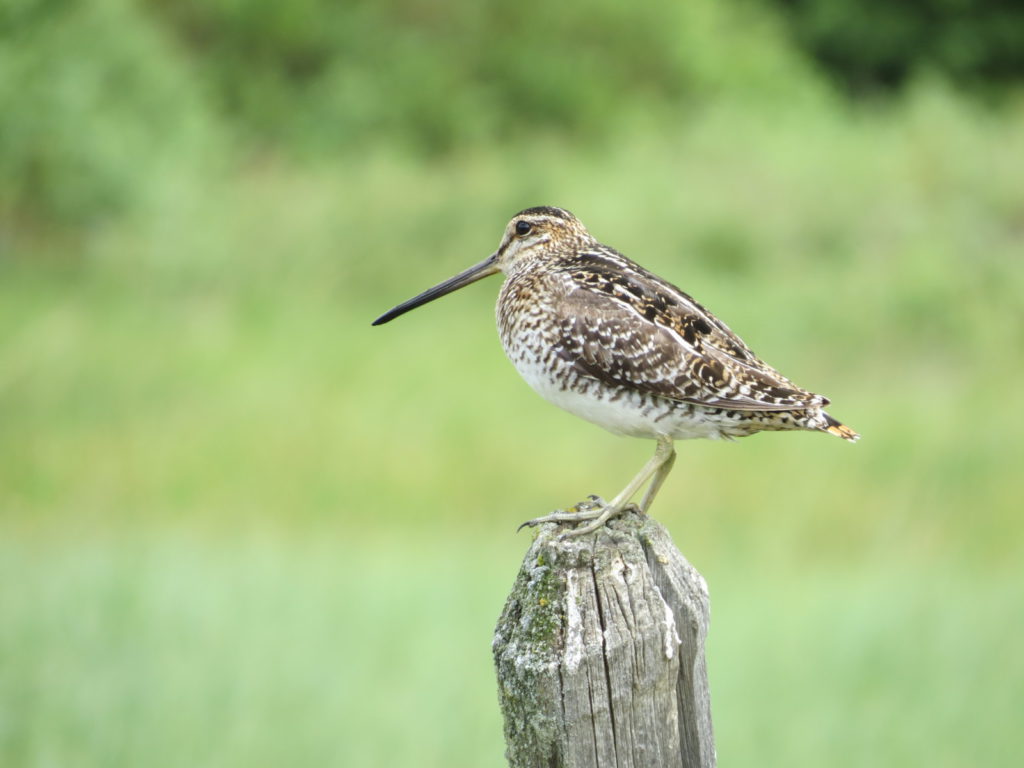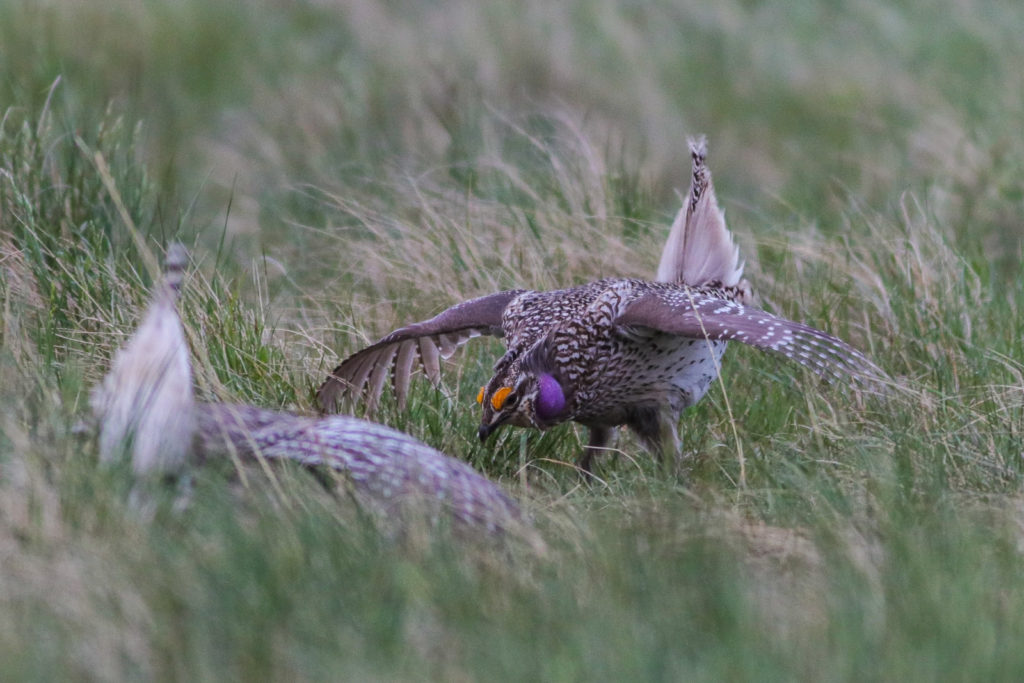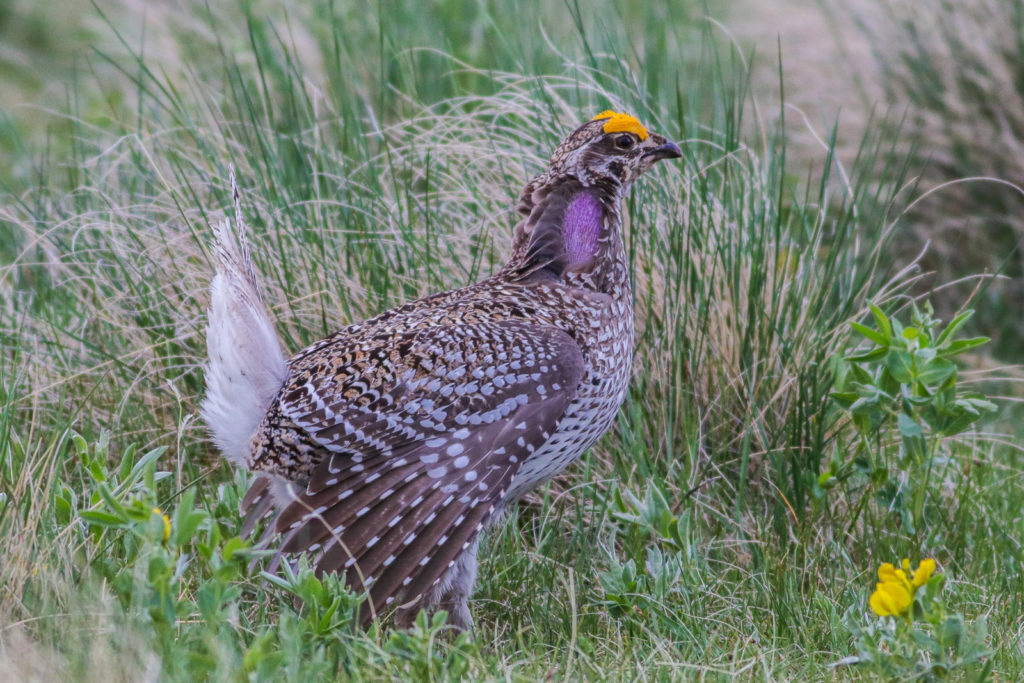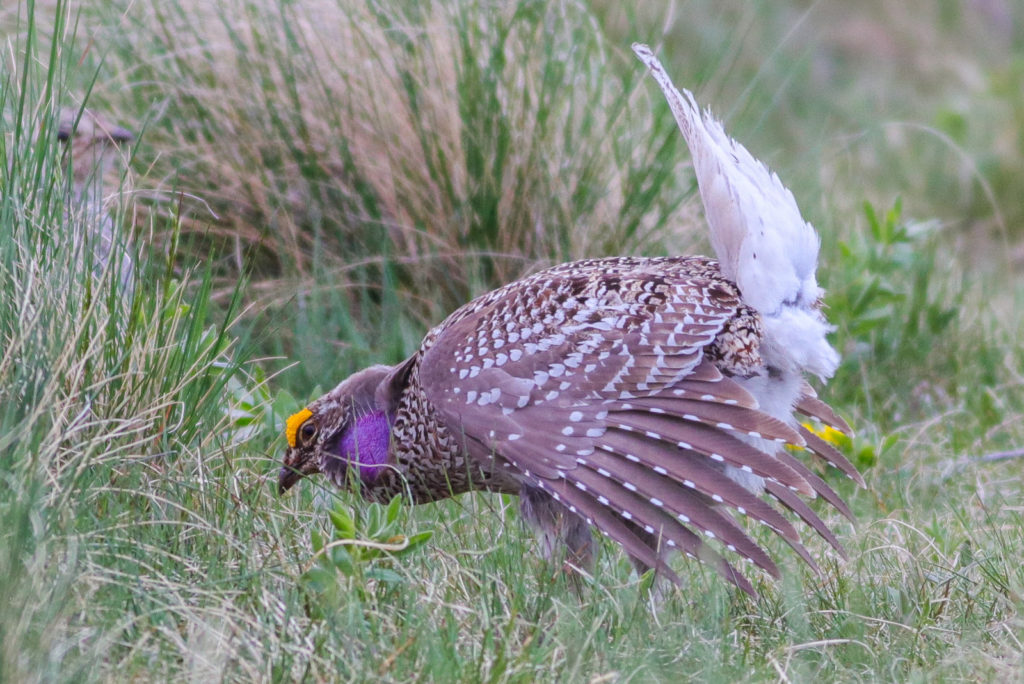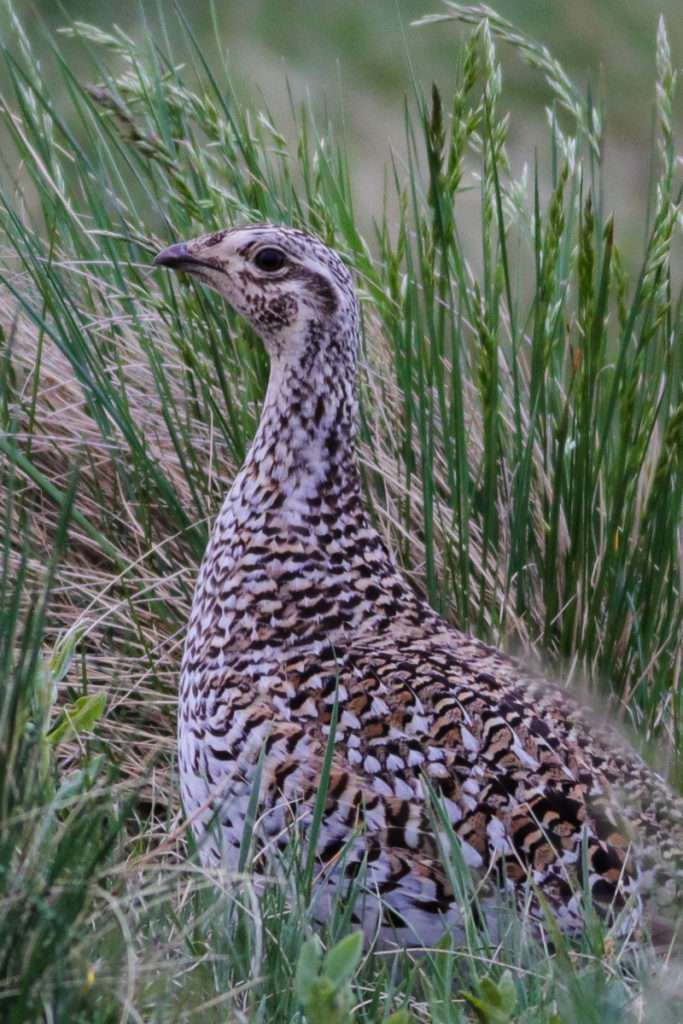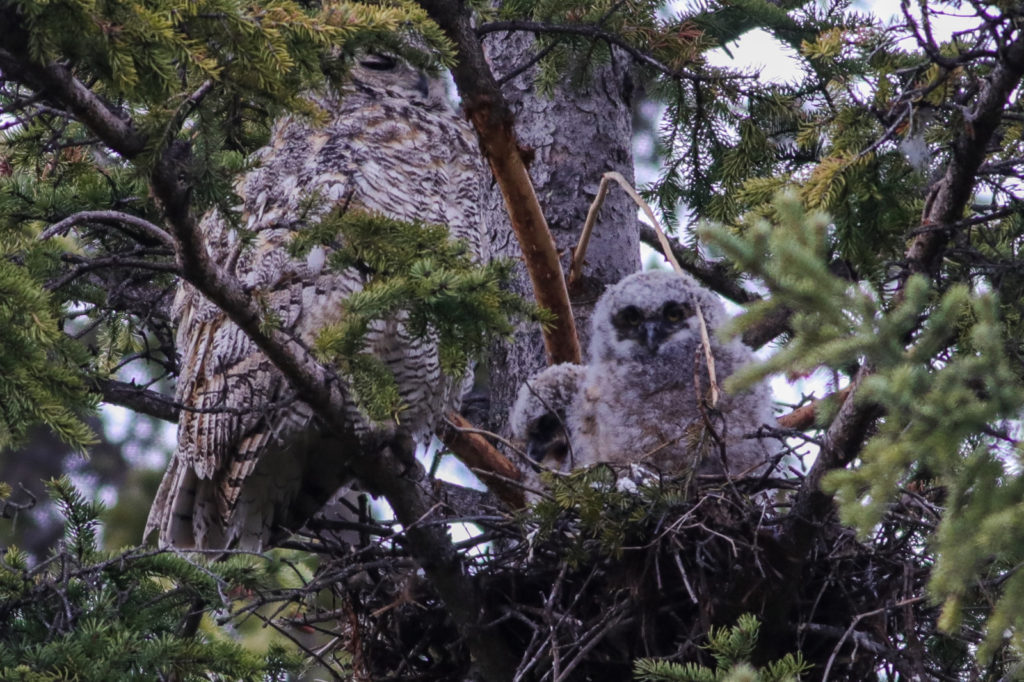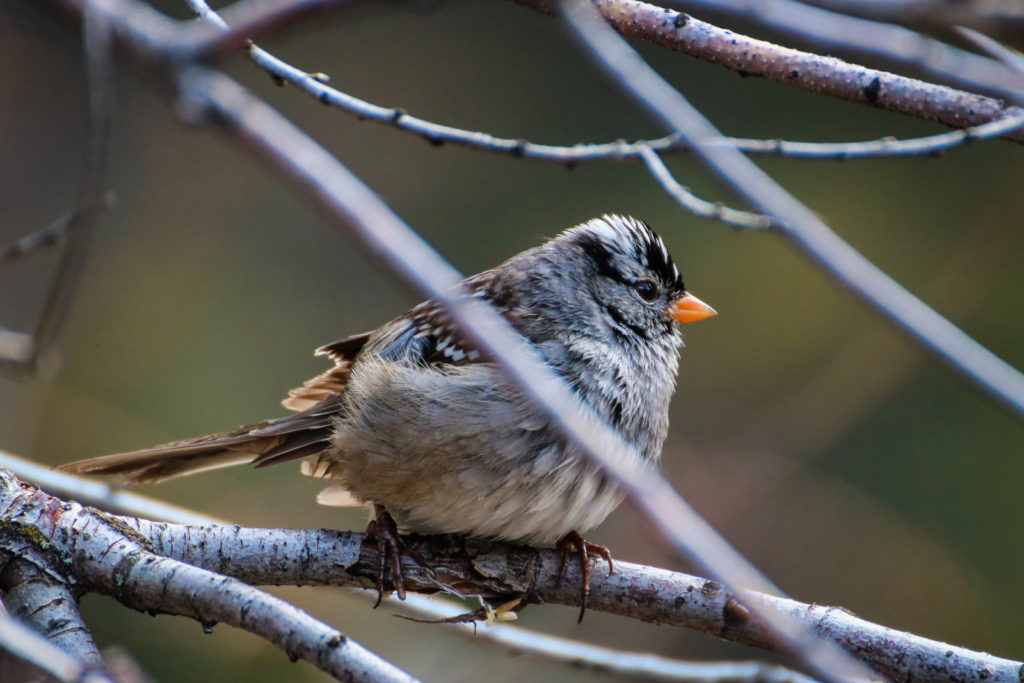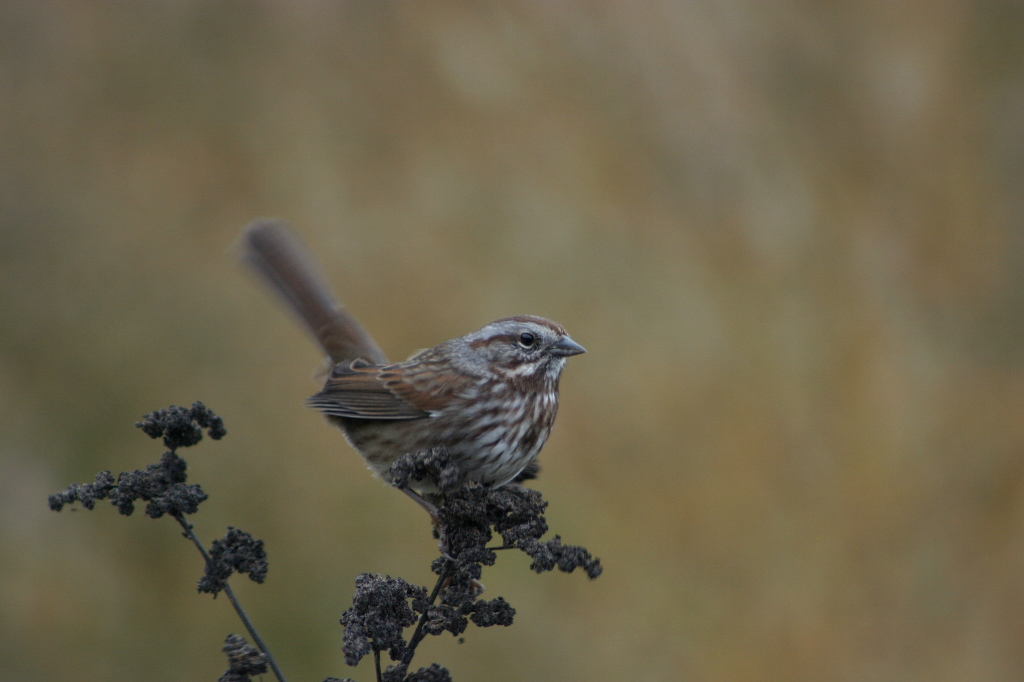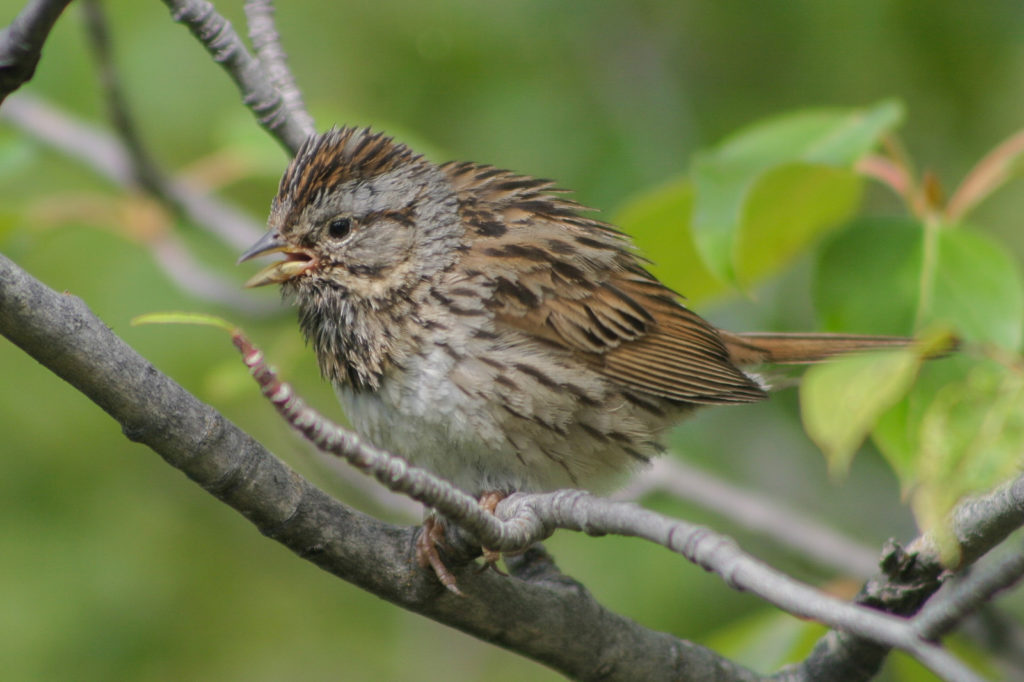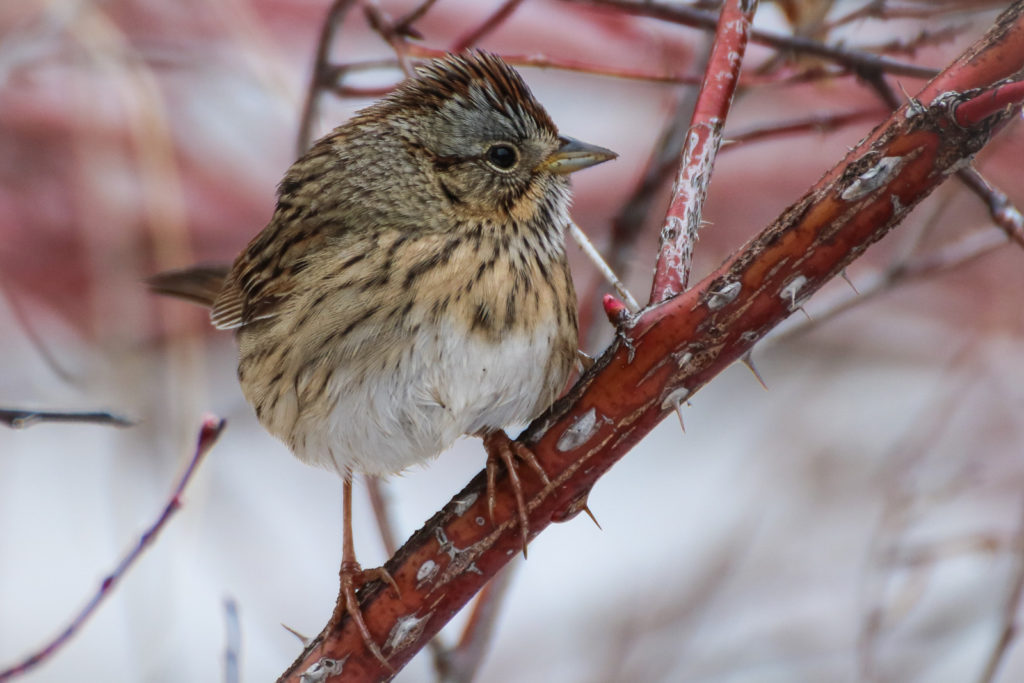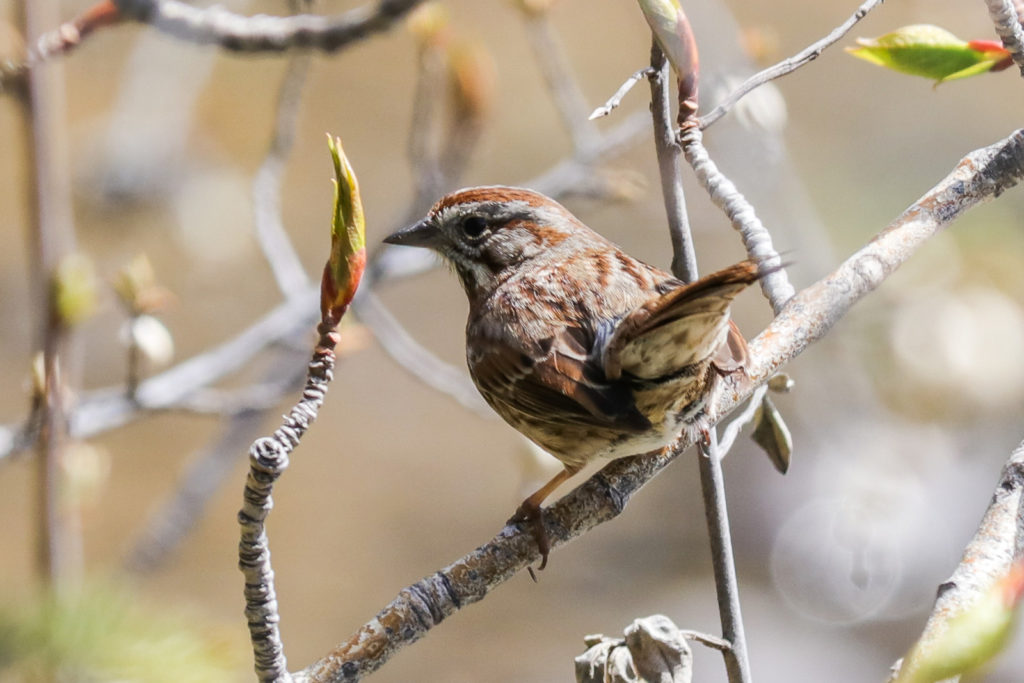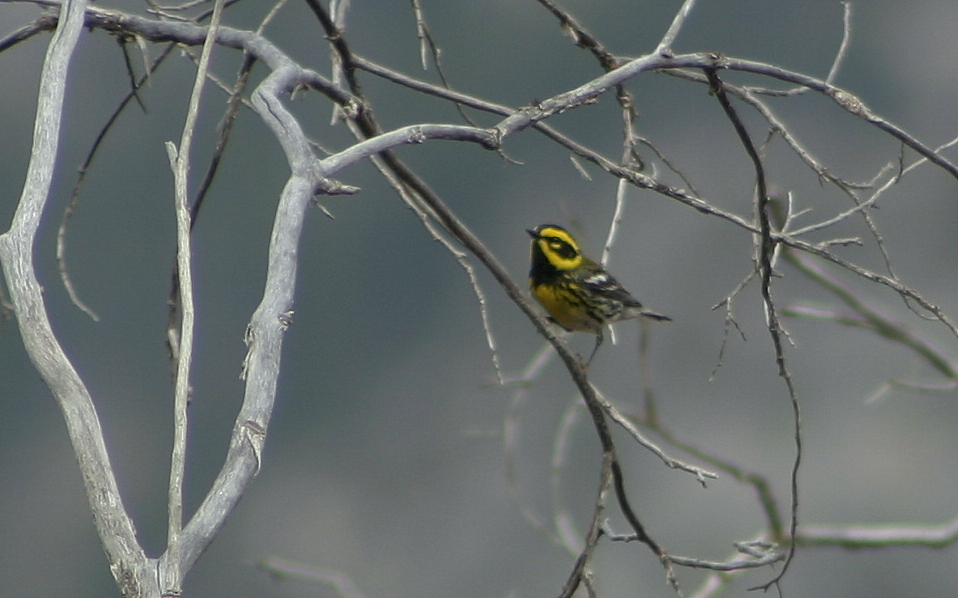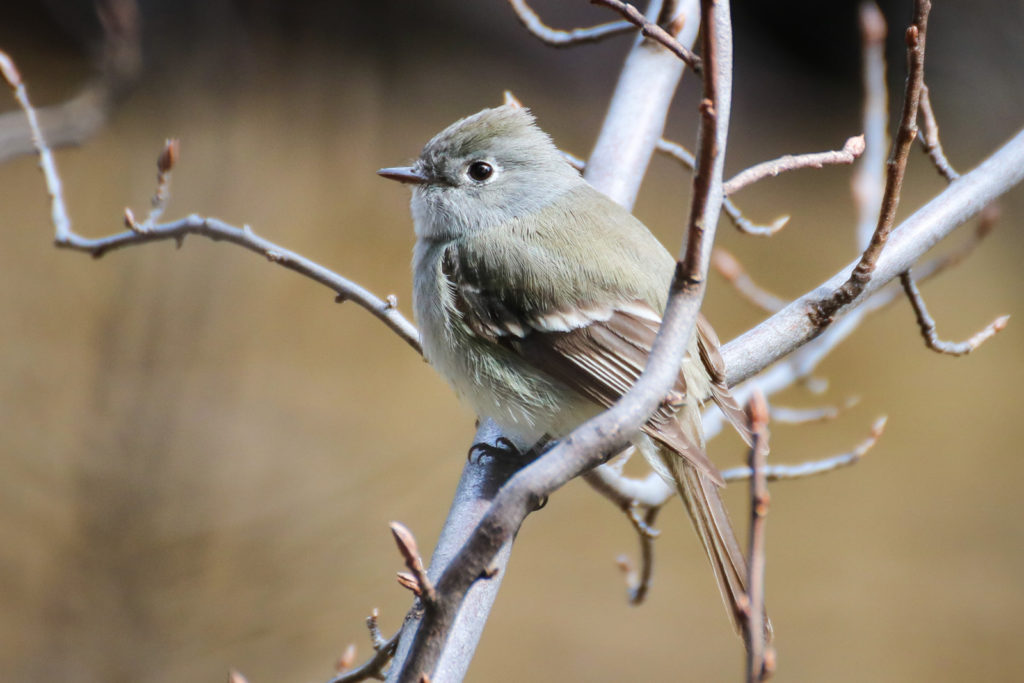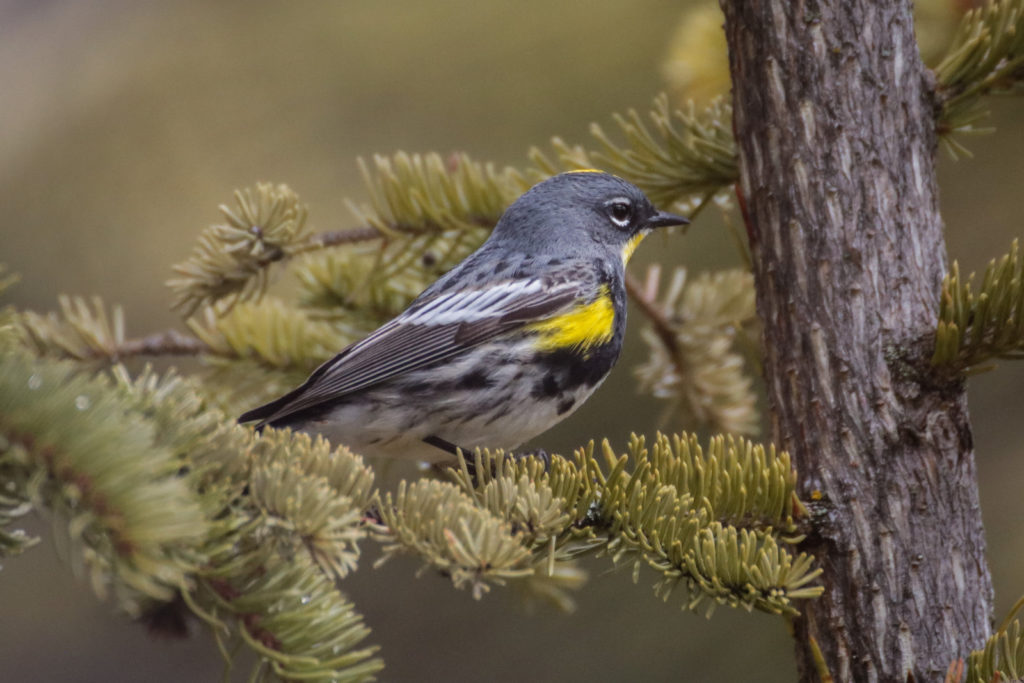The last of the Spring Bird Walks started cool, with the sun just peeking through the clouds. Arriving early at the meeting place, I was fortunate enough to see a Great Blue Heron fly-by – not a common sight there. We headed down the boardwalk, not seeing much but hearing a lot. Waterfowl were in short supply, with only a few Mallards to count, but it was made up for by the now flying owlets.
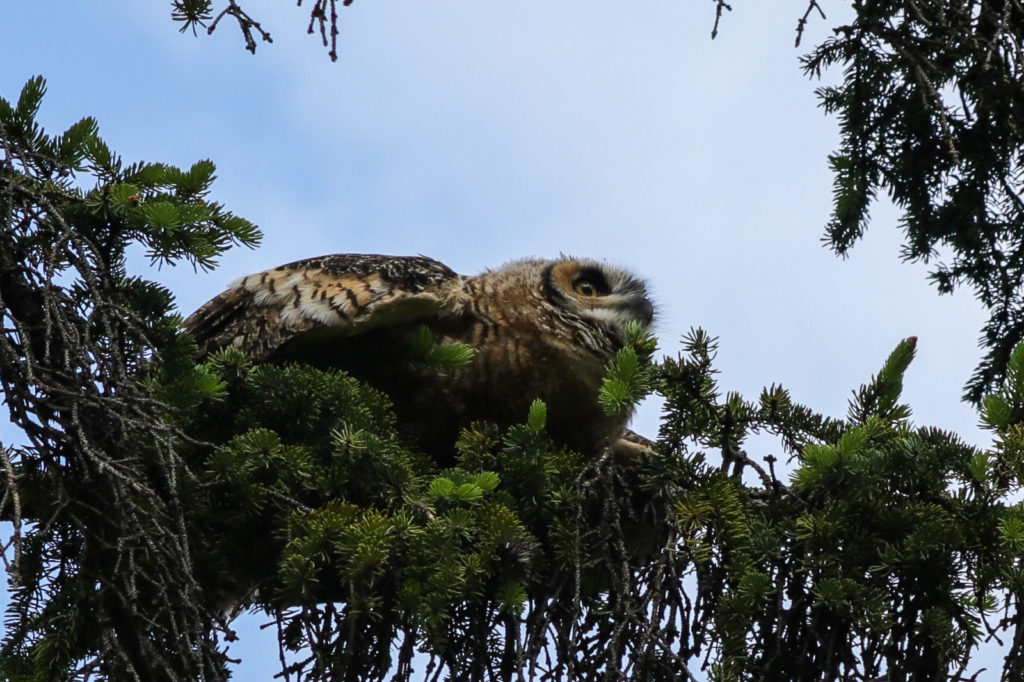
Two owlets and the female were on the path side of the creek, and the owlets put on a show for us for some time. They bounced around in the branches, unscared of the humans and in full view before working up the courage to fly back across the creek.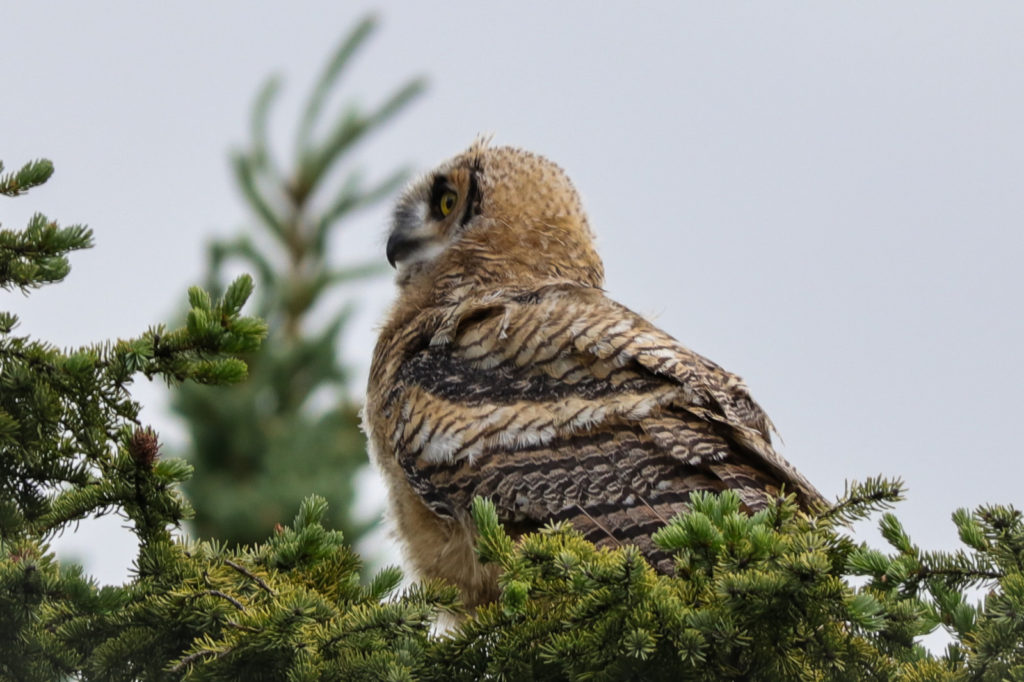 Singing from the same perch as always sat a male Yellow Warbler, and two Blue Jays offered views from a few feet away. There were plenty of swallows at Spring Creek, and a winnowing Wilson’s Snipe cam crashing down into the marsh near us.
Singing from the same perch as always sat a male Yellow Warbler, and two Blue Jays offered views from a few feet away. There were plenty of swallows at Spring Creek, and a winnowing Wilson’s Snipe cam crashing down into the marsh near us.
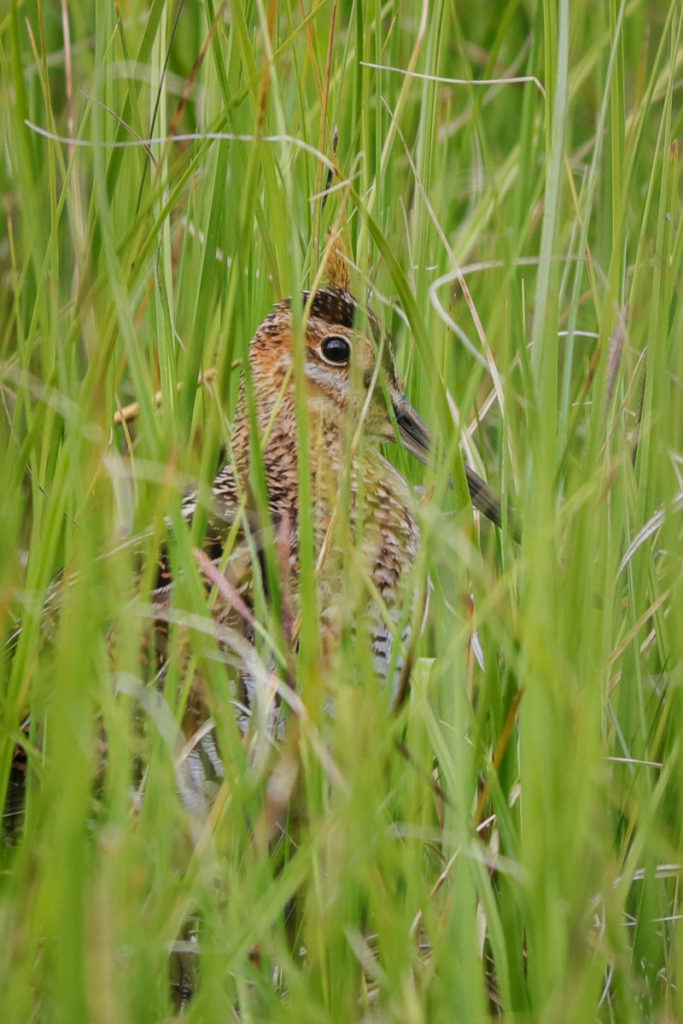
That concludes the series of walks on the boardwalk for this spring, but stay tuned for the walks I’ll be leading in late August and September, when we’ll hope for warblers, finches and hawks among others.
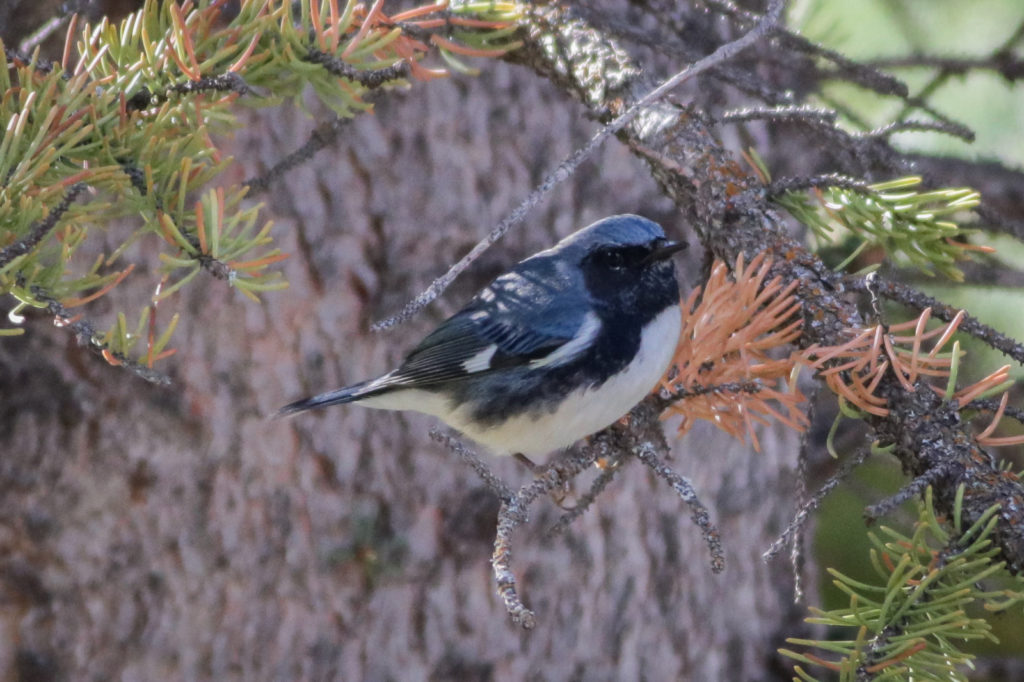
Thanks for coming out, everyone, and I hope to see you in the fall!
